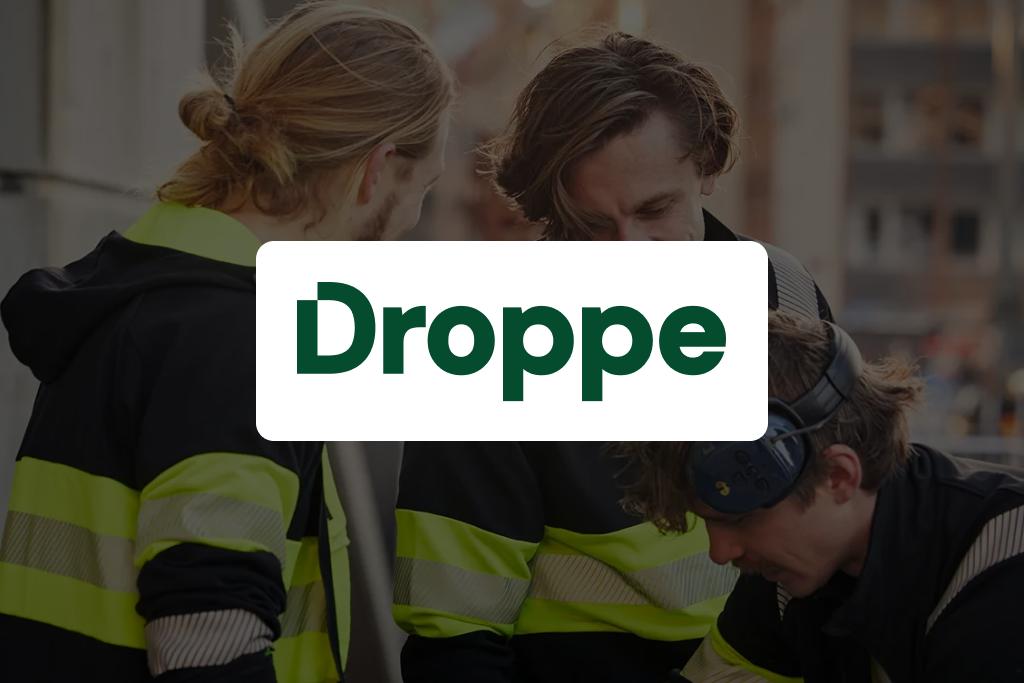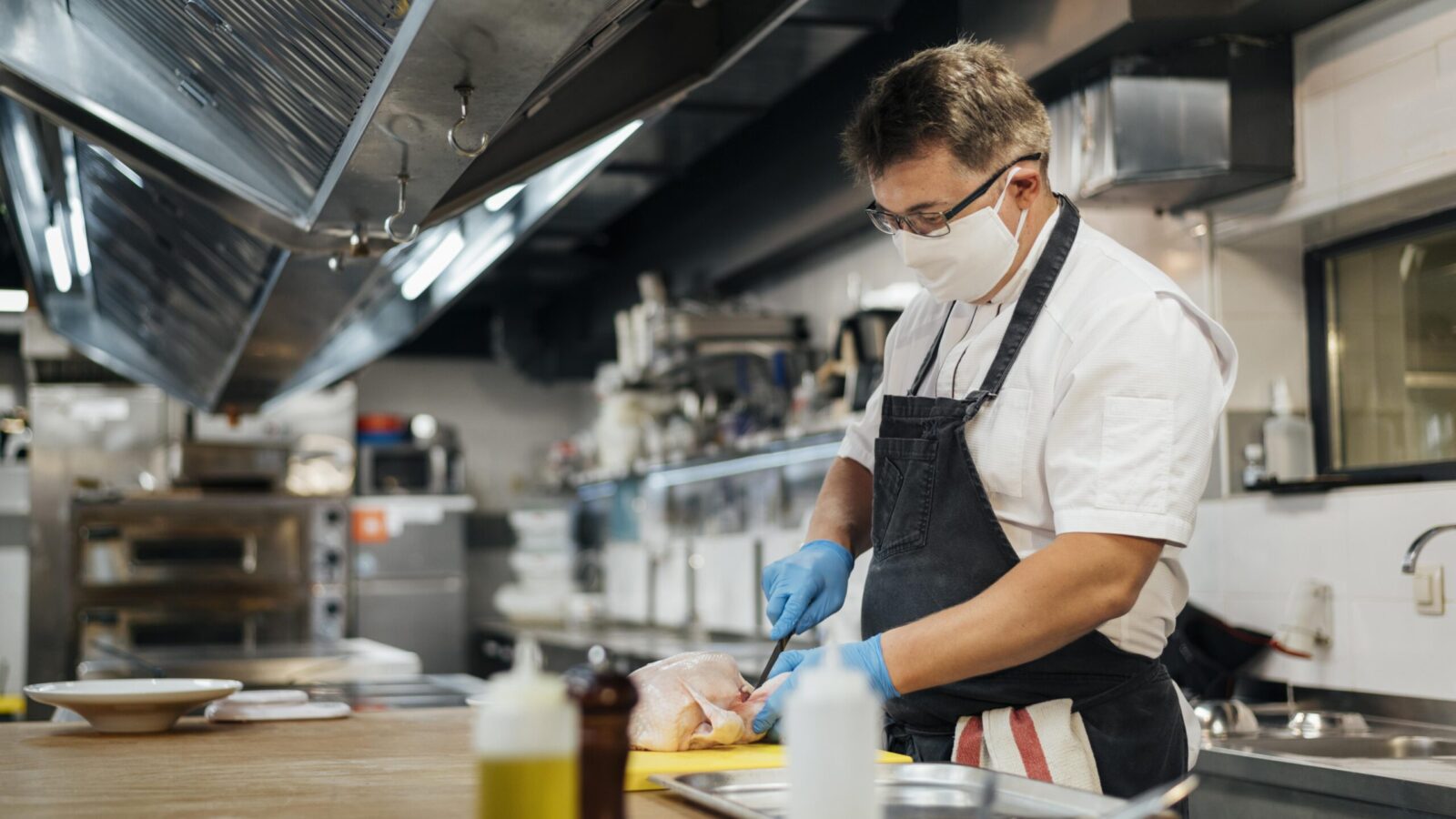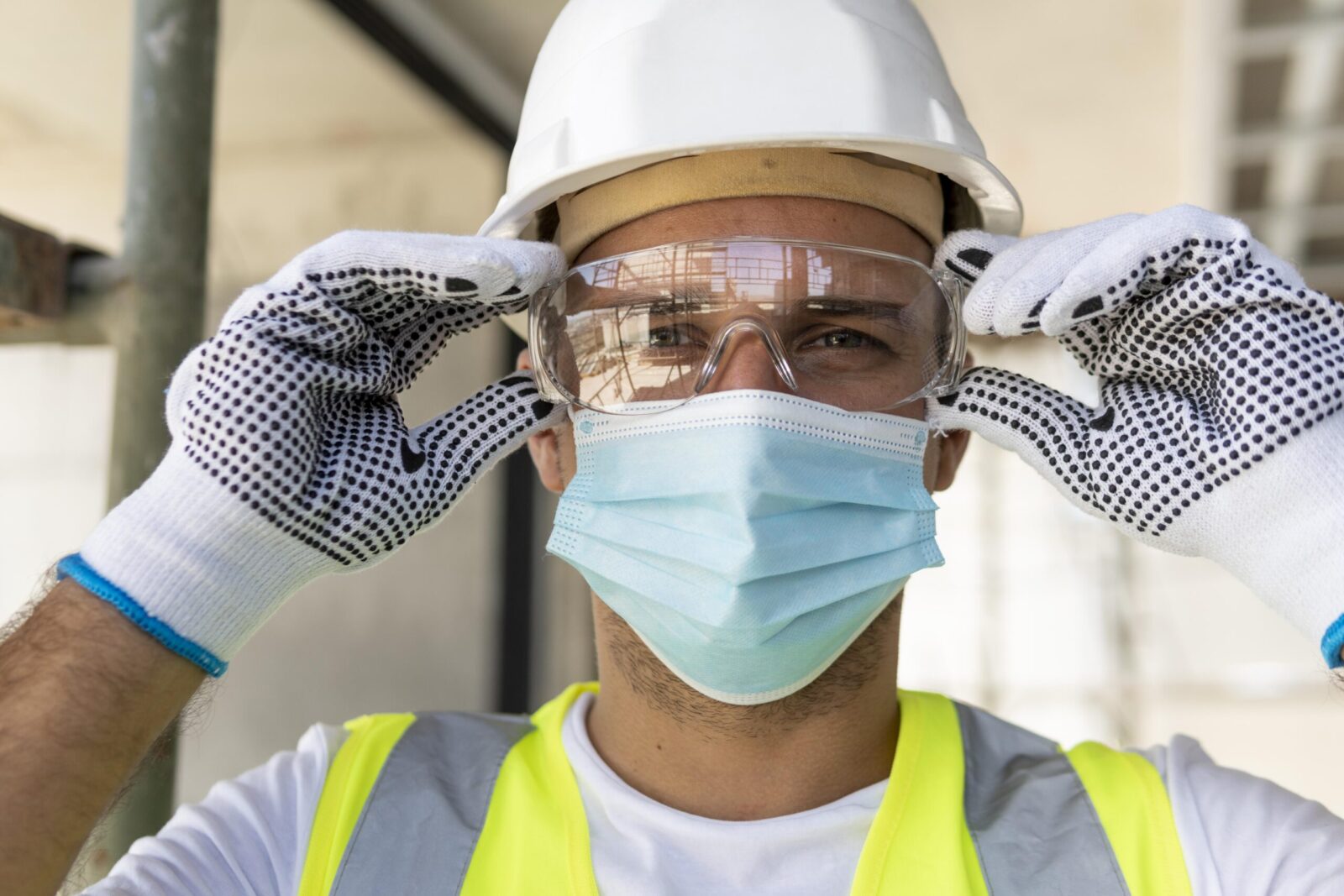
How To Choose The Best Anti-Fog Safety Glasses
Struggling to maintain clear vision in demanding environments? This guide is here to help. By the end, you’ll know exactly...

Get 20€ off on your first order!
Are you part of the food industry as a restaurateur, a restaurant manager, or are you perhaps tasked with procurement for a food processing plant?
If so, you’re surely aware of the stringent regulations surrounding the usage of personal protective equipment, also simply known as PPE. These laws are designed to shield your workers from many hazards (like cuts, burns, chemicals, and infections) but to also prevent food contamination.
That being said, navigating the extensive array of PPE options available on the market can be a daunting task, leaving you wondering which ones are the right fit for your specific use cases.
In this article, we’ll cover everything you need to know to keep your workers safe and healthy – from identify the specific hazard they face to how to properly use, maintain and dispose of their PPE.
Here are the topics we will cover:

The food industry is one of the most regulated due to its potential risks to public health and many hazards workers face on a daily basis.
This is why, every decision concerning the best type of Personal Protective Equipment (PPE) for your restaurant or food processing plant should go well beyond simply opting for the cheapest or most popular options available. Guaranteeing the safety and well-being of your workforce demands a deliberate assessment of your workplace’s specific requirements and potential hazards.
For instance, if your team handles chemicals or potent cleaning agents, relying on standard-issue gloves and aprons may not provide adequate protection. Moreover, when your workers are confronted with chemicals that are particularly heavy or have the potential to splash, the enhanced coverage offered by a face shield and respirators surpasses the conventional protection of safety glasses and single-use face masks.
So, what are the main risks workers face in a food processing area?
As a last note, if you operate in the European Union it’s important to adhere to the safety standards and regulations set forth by the EU. You can read more about those in our article: A Look at Industrial PPE Regulations in the EU.

Selecting suitable Personal Protective Equipment (PPE) marks the initial step in a comprehensive safety strategy. The true effectiveness of the PPE you choose for your workforce also hinges on its correct usage, regular maintenance, and the ability of your workers to identify when replacement is necessary.
Here are some practical best practices to guarantee PPE is used, maintained, and disposed of correctly:
For more information on how to properly utilise, maintain and dispose of your PPE read our article: From Usage to Disposal: A Complete Guide to PPE Procedures.
Here are all your most frequently asked questions on PPE in the food industry:

Whether you’re a restaurateur, a restaurant manager, or a professional buyer for a food processing plant you know that personal protective equipment is a critical component of any food industry safety program.
When you learn to identify the right PPE and make sure your workers know how to use it, maintain it, and dispose of it, you will exponentially reduce the risk of injury and food contamination.
Next, remember to check out our extensive catalogue of PPE supplies for food manufacturing from Europe’s top vetted suppliers – or click on the following PPE categories for quickly accessing exactly what you need:
Thank you! You've signed up for our newsletter.



















Struggling to maintain clear vision in demanding environments? This guide is here to help. By the end, you’ll know exactly...

Electricians across Europe face unique challenges that require reliable safety glasses to ensure both protection and efficiency. Whether safeguarding against...

Choosing the right GN container material is essential for efficient and smooth food service. This guide simplifies the decision, providing...

Struggling to maintain clear vision in demanding environments? This guide is here to help. By the end, you’ll know exactly...

Electricians across Europe face unique challenges that require reliable safety glasses to ensure both protection and efficiency. Whether safeguarding against...

Choosing the right GN container material is essential for efficient and smooth food service. This guide simplifies the decision, providing...
Get 20€ off on your first order!
Save 30% by buying directly from brands, and get an extra 10€ off orders over €100
Save 30% by buying directly form brands, and get an extra 10€ off orders over €100